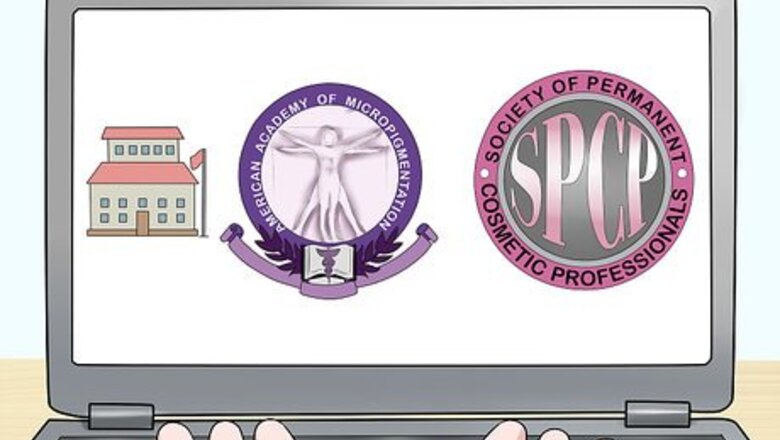
views
Attending a Training Class
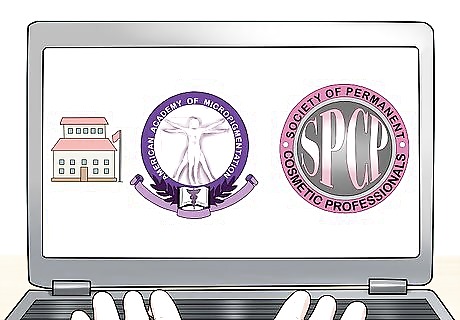
Look for classes approved by the AAM or SPCP. The American Academy of Micropigmentation and the Society of Permanent Cosmetic Professionals provide microblading certification to much of the English-speaking world. As such, look for training classes approved by at least one of the two boards, meaning they follow the organization’s official regulations and are run by a society-certified instructor. The SPCP and AAM maintain lists of certified trainers on their official websites.
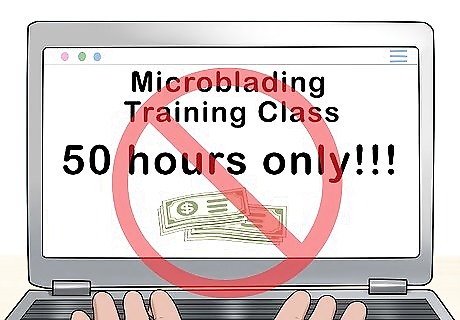
Avoid classes that provide less than 100 hours of training. Due to microblading’s boom in popularity, lots of for-profit training classes have popped up around the world. Avoid classes that are under 100 hours long or make no mention of the AAM or SPCP. Though some of these classes provide accurate training, many are scams and few will get you closer to official certification. Scam courses are often less than 6 days long, extremely cheap, or advertise the inclusion of a free microblading kit.

Enroll in and attend the training class. After finding a good class, enroll with the instructor, pay any required fees, and attend. Expect to work for at least 100 hours with the time divided into class study, homework, live practice, and teacher demonstrations. If AAM and SPCP trainers do not live in your area, travel will most likely be required. Most full courses cost between $4000 and $5000. Expect to take off work for about 1 week in order to attend.
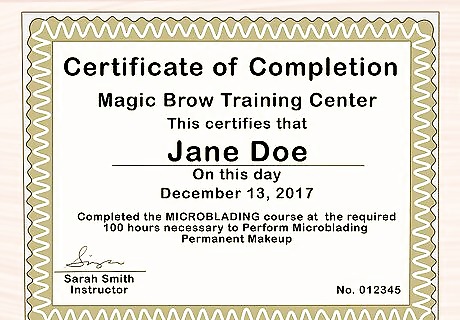
Get official documentation that shows you attended and passed the class. Make sure this documentation includes how many hours you worked and has your instructor’s official signature. In addition, with the model or patient’s consent, make sure you take photos of any live work completed. This is essential for both the AAM and SPCP exams, which require proof that you completed 100 hours of training.
Earning Your Certification
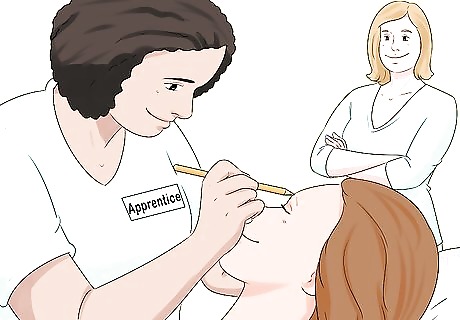
Ask for an apprenticeship with a local technician. If you do not feel ready for the exam or need further training to complete your 100 hours, ask a local technician for an apprenticeship or internship. The AAM and SPCP list members who offer internships on their online directories, though members not listed may also agree to take you on. Most microblading internship programs are not paid. In some cases, certified technicians may charge a fee of up to $500 per procedure for apprenticeship services.

Join the AAM or SPCP. The AAM and SPCP require you to purchase an organization membership to take their exam. Both organizations offer membership through their online shop, with the AAM charging $250 and the SPCP charging $310. Though both boards grant similar levels of professional respect, the AAM is known primarily in the United States while the SPCP has greater recognition abroad.
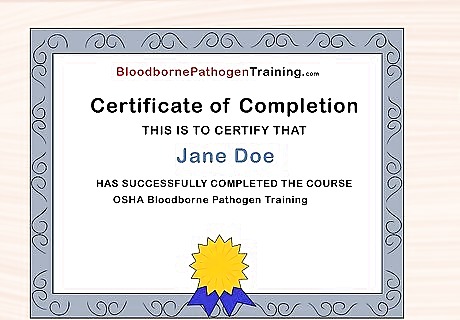
Pass a BPS certification course. In addition to 100 hours of microblade training, both boards require you to complete a Bloodborne Pathogens Standard course that meets OSHA’s BPS standard. These courses are cheap, running $25 and under, and the organizations prefer you complete them in person. When finished, you should receive a Bloodborne Pathogens training certificate. If you cannot complete the course in person, your organization may accept online alternatives from Eduwhere or Your Training Place.
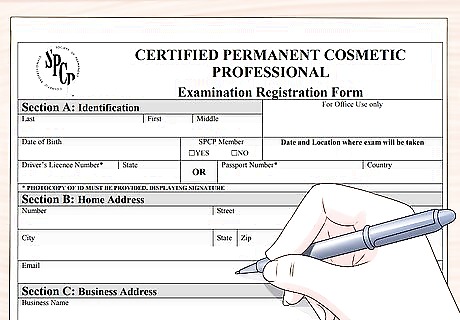
Sign up for an AAM or SPCP certification test. Upcoming tests are listed on each of the board’s official websites. Both organizations charge $250 per test. The AAM sells applications through their online shop while the SPCP offers them through an informational PDF. At this time, or any time prior to the exam, your chosen organization may ask you for a photo ID, proof of membership, and proof that you successfully completed BPS and microblade training.
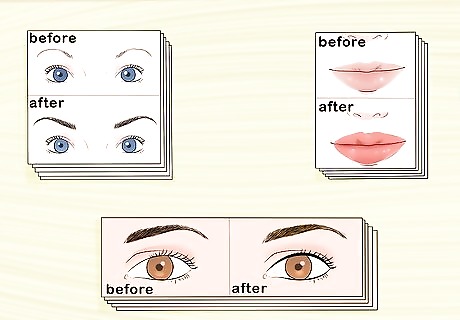
Provide proof of insurance and client work (AAM only). Because part of their exam is practical, the AAM requires proof of technician’s insurance and a client file with examples of 5 eyebrows, 5 eyeliners, and 5 lips you worked on during training. If you’re located in New Jersey, Maine, Massachusetts, or Nevada, this lowers to 2 eyebrows, 2 eyeliners, and 2 lips.
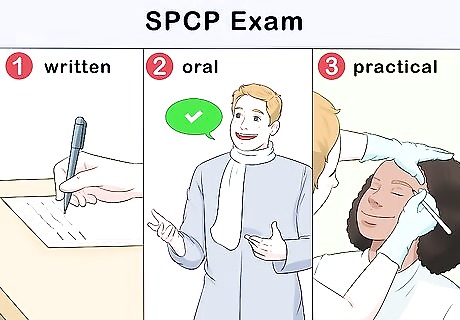
Pass your certification test. The SPCP exam is comprised of 100 multiple choice questions covering infection control, diseases and disorders, anatomy and physiology, pigmentology, technical applications, regulations, client management, and documentation. The AAM exam is divided into 3 sections, including a written exam, oral exam, and practical exam covering similar topics. To help you prepare for the exam, the AAM and SPCP sell extensive study guides and sample tests through their online stores.
Becoming a Technician
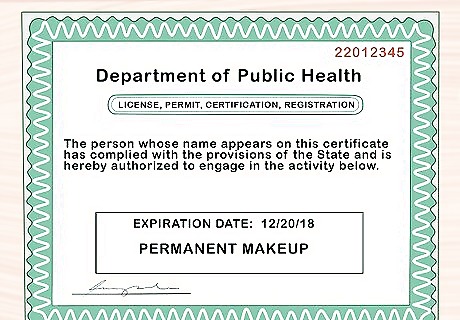
Acquire a license from the Department of Health. To work legally as any type of technician, you’ll need to acquire an operating license from your Department of Health or Public Health. Depending on your location, this license may be for cosmetology, permanent makeup, or tattooing. To apply for a license, contact the department and request an application. Make sure you know and meet their requirements for facility, equipment, and personal hygiene before applying.
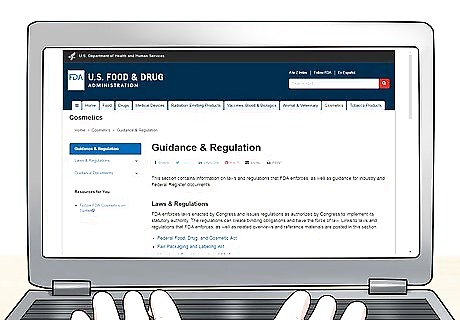
Meet national cosmetic regulation standards. Whether practicing with a license or not, national governing boards like the Food and Drug Administration have strict cosmetic requirements to keep consumers safe. These are available to view on the board’s official website and range from pigment and ink requirements to infection and injury prevention. To avoid major fines or malpractice lawsuits, make sure you understand and comply with any and all national standards.

Look up your area’s specific microblading requirements. Microblading is regulated on the local level as a form of permanent makeup or tattoo. These regulations vary widely by country, state or district, and county. For information on what you need to become a practicing technician in your specific area, contact your local Department of Health, Cosmetology, Human Services, or Commerce.

Apply for a job. If you’re just starting out, look for jobs at cosmetic and permanent makeup boutiques. Do not expect a full technician position right away, though assistant technician jobs are well within reach. Once you have significant cosmetic experience, try opening your own practice to make more money and have greater control over your career. Look for jobs with organizations and individuals listed on the SPCP and AAM’s online databases.










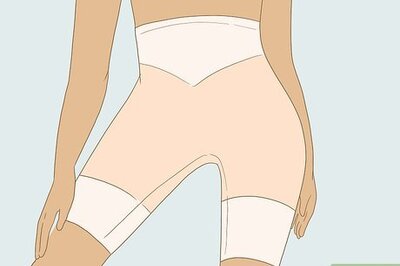








Comments
0 comment